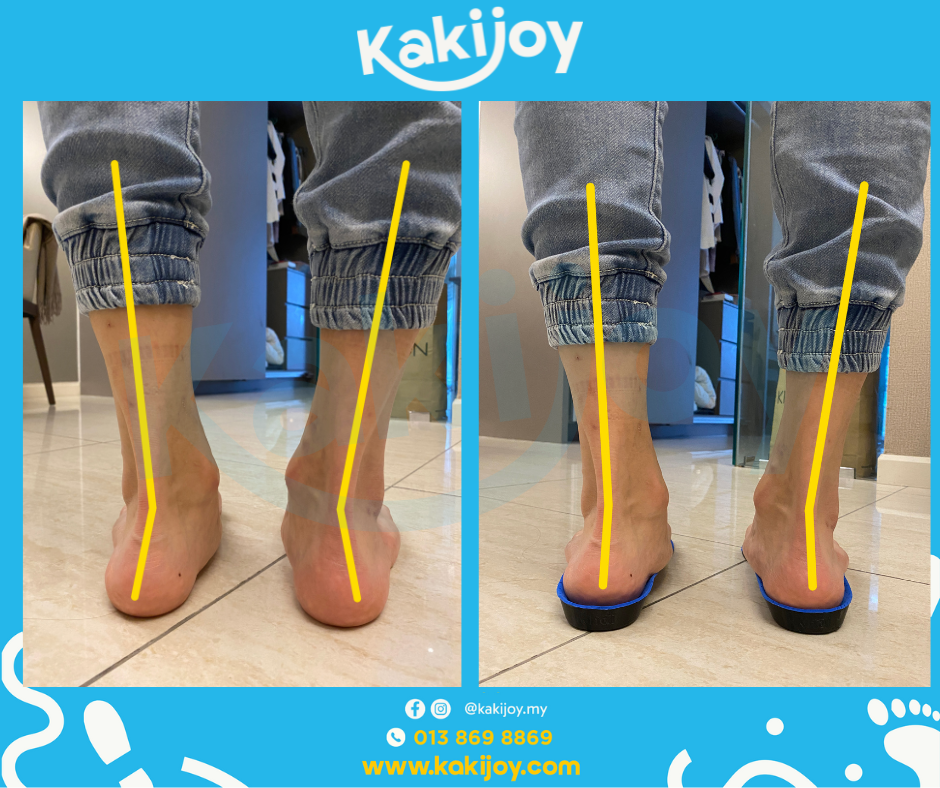12-Year-Old Still Walking with Severe Out-Toeing and Flat Feet? Parents, Are You Making the Right Choice?
- KakiJoy

- Mar 31
- 3 min read
Xiao Hao (pseudonym) is now 12 years old. She has been walking with an out-toed gait since she was young, and her feet are completely flat on the ground. Her mother first noticed this abnormal walking pattern when she was 5 years old. At first, she didn’t think much of it, assuming that her child would naturally improve as she grew older. However, an incident at a kindergarten sports day made her realize the severity of the problem.

That day, while other children were running and jumping around effortlessly, Xiao Xin was struggling to keep up. Her steps were heavy, and her feet seemed to be dragging along the ground. What broke her mother’s heart the most was when, after just one lap, Xiao Xin gasped for breath, rubbed her feet, and whispered, “Mom, my feet are so tired… they hurt…”

Her mother became anxious and immediately sought advice from her friends. One friend suggested that it could be due to flat feet and recommended getting her some corrective insoles. Without hesitation, she purchased a pair of so-called “flat-foot correction” insoles, hoping they would quickly fix the issue.
However, after a year, there was no improvement. Running was still difficult, and Xiao Xin even started complaining about foot pain. Realizing that the problem was more serious than she had initially thought, her mother decided to take her to a professional institution. She spent thousands of dollars on custom-made insoles, convinced that this time, they would finally solve the issue.
Several years passed, and instead of improving, Xiao Xin’s condition worsened. Her out-toeing became more pronounced, and when she stood, her feet noticeably rolled outward. What puzzled her mother even more was that her daughter became increasingly resistant to wearing the insoles.
She later discovered that the insoles Xiao Xin had been using were too hard, almost like plastic. They were so uncomfortable that she refused to wear them. Every morning before school, she would secretly remove them, either stuffing them into her bag or hiding them in the shoe cabinet. Once at school, she never wore them at all. Only then did her mother realize that all the money she had spent not only failed to help but also made her child develop a negative attitude toward corrective insoles.
This left her devastated. She had followed all the recommendations and spent so much money—so why was her daughter’s condition worsening instead of improving?
Using Insoles Isn’t Enough—You Have to Use the Right Ones!
Many parents believe that buying a pair of insoles marketed as “corrective” will automatically solve their child’s walking problems. But the reality is that the design, material, and whether the insoles truly match the child’s foot structure all play a crucial role in determining their effectiveness.
Off-the-Shelf vs. Custom-Made InsolesMany insoles available in the market are only for general support and are not truly customized for a child’s specific needs. Some even worsen the problem.
Custom-Made ≠ One-Time FixProper corrective insoles require regular adjustments as a child grows. A one-time purchase without follow-ups and modifications will not yield the desired results.
Walking Issues Are Not Just About InsolesMany children need more than just insoles to correct their gait. Muscle training, gait correction, and proper footwear selection must also be considered.

Don't hesitate—contact us now!




コメント